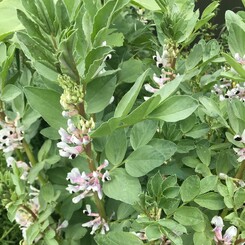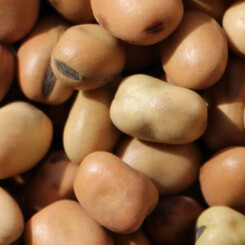Faba Beans
Vicia faba
One of the oldest crops grown, a high source of protein in human diets, and important as a fodder and a forage crop for stock.
Faba Beans are an erect, tall crop of 1 - 2.5 m and have the ability to tiller. Depending on variety 1 - 3 tillers are common. The plant has a deep taproot with abundant of feeder roots which fix nitrogen to the soil. Flowering begins at 20 cm in height and grows in clusters of 3 - 8, with each flower cluster producing 1 - 5 pods. As the crop ripens,s it turns black, with the seed pods becoming ripe from the lowest and working up the stem to the top.
pros
Is a nitrogen-fixing plant
A valuable component of the arable cropping rotation
Excellent break crop enhances cereal yield and decreases the occurrence of take-all
Fits well into a sustainable cropping programme
Stubble residue is a nutrition source for stock feed
Have the potential to improve soil fertility and structure through the deep taproots and nitrogen-fixing ability of the crop
As a break crop in the rotation, Faba Beans allow for an alternative approach to disease, pest and weed management
Can tolerate mild winter frosts but the optimum growing temperature is 15 - 25oC
Tolerates water logging and acid soil types better than other grain legumes
Does best with soil pH ranging from neutral to alkaline pH of 7.0 to 9.0. the liming before establishment may be beneficial
cons
The crop may suffer moisture stress in soils that dry quickly
Flowers will abort if temperatures exceed 27°C
Sensitive to hot, dry conditions during podding and may require irrigation
Little tolerance for compacted or impaired soils
Sensitive to herbicide residue present in the ground at the establishment
Mixture
A valuable component of annual mixes which include herbs, legumes and grasses


